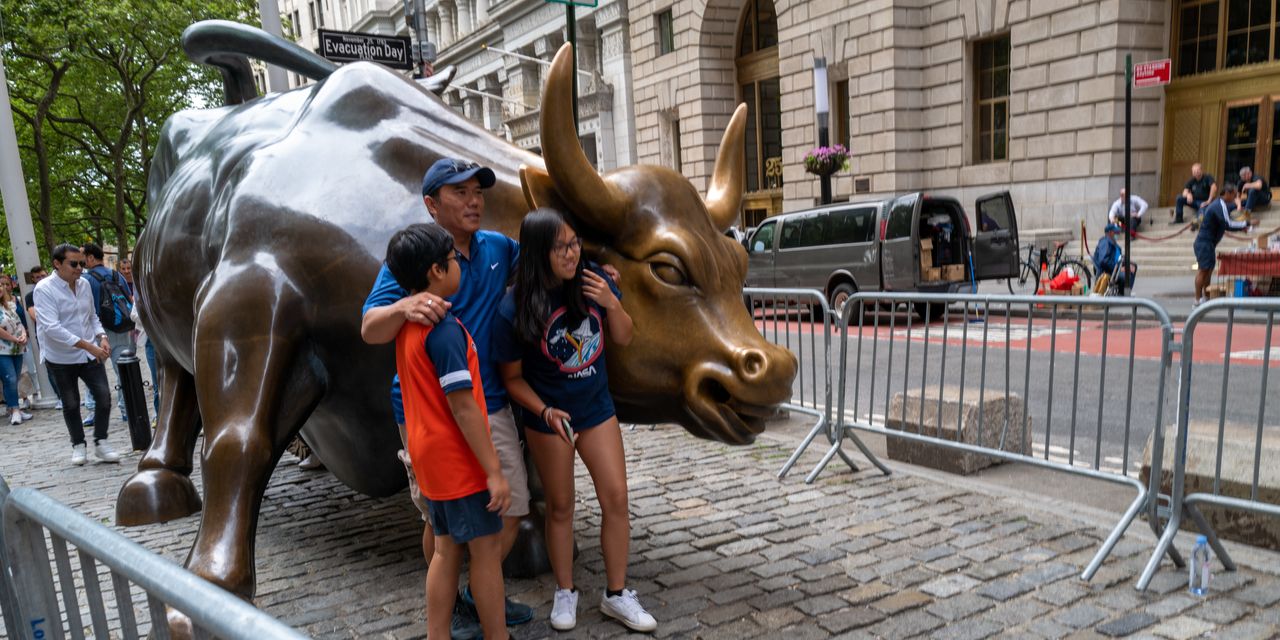For all its downward dips so far this year, the stock market may not scaring off many retail investors, polling and purchase data suggest.
One quarter (26%) of people said the stock market is the best place to tuck away money they will not need to tap for a decade, according to a new Bankrate.com survey.
However, their top investment choice was real estate — in the form of home ownership and/or investment in the sector itself — with 29% saying it was the optimal way to invest for the long run. Real estate has been survey respondents’ top investing choice for three of the last four years, Bankrate noted.
But the share of people favoring the stock market this year is notable because it’s up from 16% a year ago. Furthermore, by the time people were talking to pollsters about preferred investment choices in mid-June, the S&P 500 had veered into bear market territory, technically a 20% pullback from a recent high.
People appear to be keeping the lessons of the pandemic-induced stock market drop and subsequent resurgence in 2020 at the front of their minds, said Greg McBride, Bankrate’s chief financial analyst.
“We’re not seeing investors respond the way they typically have” by selling off and eyeing the exits in response to recent downturns, McBride said. “And that’s a good thing. This sentiment and behavior this year is much more consistent with the long perspective.”
In a poll earlier this year, more than half of people (56%) said they were purposely not making any different investment decisions this year in spite of the market volatility, McBride noted.
The latest Bankrate data notes that for the people who dislike stocks as an investment option, the chance for wild swings in value are the top reason why.
The polling aligns with other recent reads on investor mood.
Almost two in 10 Americans (18%) viewed stocks and mutual funds as the best long-term investment, according to a Gallup poll in May. That was second behind real estate, which 45% of people deemed the best investment for the long run.
Meanwhile, more than half of Charles Schwab
SCHW,
clients said they had a bearish view of the stock market during the second quarter, according to a May survey. Yet 55% said they were not tweaking their risk exposure and just 9% said they were pulling cash out of their portfolio.
Earlier this week, Schwab’s second quarter earnings noted clients opened 1 million new brokerage accounts in the second quarter.
Still, there are plenty of prominent people who take a dim view of the market’s immediate future and advise caution. That includes Thomas Peterffy, founder and chairman of Interactive Brokers
IBKR,
which offers brokerage services to retail and institutional investors.
“I’m personally bearish and I think the market is going to see new lows,” said Peterffy, who’s one of the pioneers of computerized stock trading. In his view, there are still significant challenges ahead, starting with high inflation that will stick around longer than the Fed anticipates.
In this context, Peterffy said a wise move for a retail investor is avoiding too much exposure to stocks and keeping cash temporarily on the sidelines where it can at least reap more interest in a time of rising rates.
On Wednesday, the Dow Jones Industrial Average
DJIA,
S&P 500
SPX,
and the Nasdaq Composite
COMP,
all made gains, building on a sharp Tuesday bounce. The question remains whether it’s just a bear market rally with more room to tumble, or something different? On Thursday, the benchmarks opened lower.
Retail investors have been averaging $768 million in daily purchases of stock and exchange traded fund shares, according to a Wednesday note from Vanda Research.
That’s below a year-to-date daily purchase average of $1.23 billion, researchers noted — but they noted that could likely be a seasonal summer lull in trading activity, not the sign of a white flag. Stock buying by one measure could still drop by another 8% “and still sit within historical ranges without representing much cause for concern,” researchers wrote.
Even in this rocky trading year, the $1.23 billion daily purchase average is so far exceeding the $1.16 billion that investors averaged last year, Vanda’s data shows.
During the first quarter of 2021, which encompassed the meme stock frenzy surrounding companies like GameStop
GME,
and AMC
AMC,
retail investors had an average $1.32 billion in daily stock and ETF purchases, Vanda data showed.
What this all means for a person’s portfolio in the short and longer term is an open question. For example, the immediate pain now may transform into gains over the coming 12 months, Bernstein analysts say. Take a step back even more and the long term buy-and-hold over years is the best strategy, investment experts say.
Hopes of rising stock prices in the coming half year climbed to a six-week high, according to the latest read of an ongoing sentiment gauge from the American Association of Individual Investors.
But don’t get carried away. The roughly 27% of investors anticipating stock price increases is still below the survey’s historical 38% average for bullish sentiment. Likewise, the 46.5% of investors anticipating lower prices is still well above the 30.5% historical average for bearish mood, the data showed.
